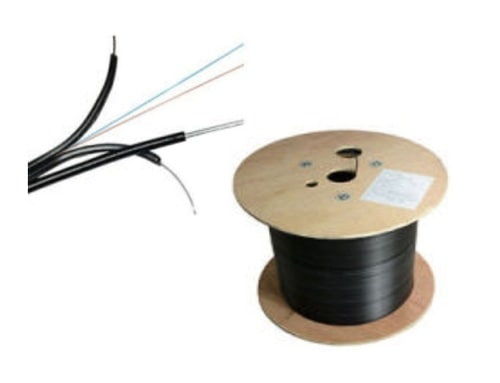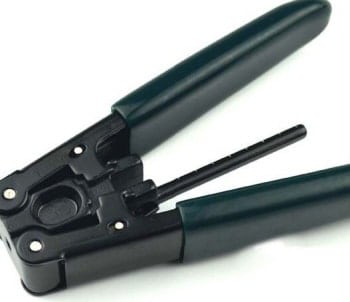A drop cable, commonly referred to as a cable drop, is a critical component in network connectivity, typically used to connect a computer’s Network Interface Card (NIC) to a wall plate. Serving as the final link in the networking chain, it plays a vital role in ensuring a stable and reliable network connection.
This article delves into the world of drop cables, offering a comprehensive overview of their functionality, types, installation processes, and their significance in modern networking.
Jump to:
- What is Drop Cable?
- Installation and Setup of Drop Cables
- Role and Importance in Network Infrastructure
- Maintenance and Troubleshooting
- References
1. What is Drop Cable?
A drop cable, also known as a cable drop, is a term frequently encountered in network installations. The drop cable meaning encompasses any short cable that connects a computer’s Network Interface Card (NIC) to a wall plate, bridging the gap between the user’s device and the broader network infrastructure. Typically, these cables are used in Ethernet-based LANs (Local Area Networks) and are pivotal in establishing a physical link to the network.

Characteristics of drop cables include:
- Length: Usually short, ranging from a few feet to several meters.
- Flexibility: Designed to be flexible for easy routing and management.
- Connectors: Commonly equipped with RJ45 connectors suitable for Ethernet interfaces.
Types and Variations of Drop Cables
Drop cables come in various types, catering to different networking environments:
- Cat5e, Cat6, Cat6a: Categories differing in bandwidth and data transfer capabilities, suitable for various network speeds.
- UTP (Unshielded Twisted Pair) and STP (Shielded Twisted Pair): UTP is common for office environments, while STP is used in areas with potential electromagnetic interference.
- Cross-over and Straight-through: Used based on network devices being connected (e.g., PC to switch, switch to router).
In a more permanent networking configuration, wall plates might be located on floors and very short drop cables might be used to connect the computers to the network.

If you are a networking professional you must have on your toolset a laser measuring tool. We have a very thorough review of the Bosh GLM165-10 and the conclusion was interesting. Check it out.
2. Installation and Setup of Drop Cables
Step-by-Step Guide to Installing Drop Cables
- Identify the Correct Type of Cable: Based on the network’s speed and environmental factors, choose the appropriate category and type (UTP or STP).
- Measure the Required Length: Determine the length needed to connect the NIC to the wall plate without excess slack.
- Run the Cable: Route the cable from the device to the wall plate, avoiding sharp bends and physical damage.
- Connect to NIC and Wall Plate: Attach the cable connectors to the computer’s NIC and the corresponding wall plate socket.
Best Practices for Effective Cable Management
- Avoid Excessive Length: Excess cable can cause trip hazards and signal degradation. Keep the cable length to the necessary minimum.
- Labeling: Mark cables for easy identification, especially in environments with multiple network connections.
- Regular Inspection: Regularly check for signs of wear or damage, replacing cables as necessary.
- Secure Routing: Use cable ties or conduits to secure drop cables along their route, preventing dislodging or damage.
Following these guidelines ensures a reliable and organized installation of drop cables, contributing to the overall efficiency and safety of the network setup.
3. Role and Importance in Network Infrastructure
Drop Cables in Home and Office Networks
Drop cables, commonly referred to as cable drops, are essential components in both home and office networks, playing a key role in creating direct connections between devices and the network. These cables, embodying the drop cable meaning, are typically used in home setups to connect devices like PCs, gaming consoles, or smart TVs, ensuring a stable and high-speed internet connection.
Similarly, in office environments, drop cables are crucial in linking workstations, printers, and various peripherals to the central network, facilitating seamless data communication and consistent internet access throughout the organization.
Integration with Network Components like Patch Panels and Wiring Closets
Drop cables play a crucial role in the larger network infrastructure by connecting end-user devices to critical network components:
- Patch Panels: In structured cabling systems, drop cables link devices to patch panels, which consolidate connections and facilitate network management. See also: Patch Cable.
- Wiring Closets: Drop cables extend from users’ desks to wiring closets where they interface with switches and routers through patch panels, forming an integral part of the network’s backbone.
4. Maintenance and Troubleshooting
Common Issues and Solutions with Drop Cables
Despite their simplicity, drop cables can encounter several issues:
- Physical Damage: Regular wear and tear or improper handling can damage cables. Regular inspections and gentle handling are key.
- Connectivity Issues: Loose connections can disrupt network access. Ensure connectors are firmly attached to both the device and the wall plate.
- Interference: Electromagnetic interference can impact signal quality. Using shielded cables (STP) in high-interference environments can mitigate this issue.
Tips for Regular Maintenance and Upkeep
- Regular Inspection: Periodically check for visible damage, wear, and secure connections.
- Proper Cable Management: Use cable organizers to prevent tangling and reduce stress on the cables.
- Environmentally Appropriate Cables: Use plenum-rated cables in spaces with airflow for heating and cooling to comply with fire safety standards.
5. References
- “Networking for Dummies” by Doug Lowe – Comprehensive guide on home and office networking.
- “Cabling: The Complete Guide to Network Wiring” by David Barnett, David Groth, and Jim McBee.